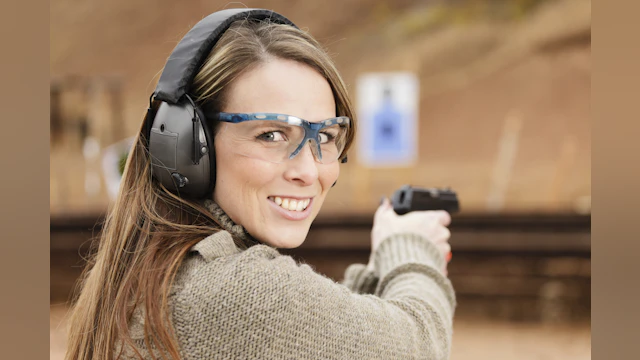Protecting Yourself and Others
Firearm owners and people that live in households with firearms must take action to protect against suicide.
Here are some things firearm owners and those that live in households with firearms can do to help prevent suicide. Click the numbered links below to read more.
- Store firearms securely: Storing securely at all times is one of the most important steps to take
- Know the warning signs for suicide: There’s no single cause for suicide, but we do know that suicide most often occurs when stressors and health issues converge to create an experience of hopelessness and despair
- Have a brave conversation: Having a conversation with someone you are concerned about and connecting them to resources is another important step in preventing suicide.
Storing Firearms Securely
Despite what you may assume, suicidal individuals who don't have immediate access to a lethal suicide method, such as a firearm, in most cases don't simply find another way to take their life. By separating a suicidal person from firearms, even temporarily, you increase their chances for survival — which is why it’s important to always store firearms securely. Secure storage means storing all firearms in ways that put time and distance between a person and the firearm. This looks like storing firearms locked and unloaded such as locked with a cable or trigger lock, or in a gun safe with ammunition stored separately at all times.
Suicide often happens when multiple factors converge and create a time of increased risk. For someone who is having a difficult time or may be under more intense stress than usual, the best way to help protect them is to temporarily remove all lethal means, including firearms, from the home until the person is no longer in a state of crisis. Options for temporarily storing your guns outside your home vary by state and community.
Secure Firearms: Storage Strategies
- Lock: Firearms should be stored securely by being locked and unloaded
- Limit: Time and distance can be created by temporarily limiting access to firearms such as removing ammunition, changing safe codes, or giving the keys for locking devices to someone for safe keeping
- Temporarily Remove: In some cases, temporarily removing lethal means such as firearms is required to keep someone safe, and temporarily removing ammunition from the home can also be considered
The Importance of Secure Firearm Storage in Protecting Others
Firearms owned by family members pose a significant suicide risk, particularly for younger individuals. Research shows that approximately 50% of suicide deaths among 18- to 20-year-olds, and nearly all suicides by those under 18, involve a family member's firearm. For women, about one third of firearm suicides involve a spouse or partner's firearm.
Have a Brave Conversation
Research shows that directly asking someone if they’re thinking about suicide won’t put the idea in their head or push them to act on it. In most cases, they'll feel relieved that someone cares enough to bring it up. So, it’s important to learn how to have a #RealConvo about mental health, and how to respond if someone tells you they’re having thoughts of suicide.
If you’re worried someone is in distress, encourage them to store their guns safely and securely, which means locked and unloaded. During a crisis, work collaboratively with the person in distress, their loved ones, and other trusted resources (e.g., their doctor) to help them remove firearms from their home until the period of suicidal crisis resolves. Finally, help them get the support they need.
Talk Saves Lives: An Introduction to Suicide Prevention
To learn more, consider attending a free presentation of Talk Saves Lives: An Introduction to Suicide Prevention. View a calendar of upcoming virtual and in-person presentations.
Focus on Firearms

I want to understand more about firearms and suicide
Firearms are involved in over 50% of all suicides in the U.S., and AFSP is leading the effort to educate firearm owners to prevent this leading cause of death. Suicide also accounts for most firearm deaths in the U.S.

Firearm retailers, ranges, and instructors
By recognizing the unique needs of firearm ranges, retailers, instructors, and other firearm industry sectors, AFSP is helping to connect firearms owners with life-saving information about suicide prevention and secure firearm storage.

I want to understand AFSP's stance on firearm policies
AFSP supports legislation to expand research and public education on suicide and firearms; voluntary removal and safe storage initiatives; lethal means counseling; and the use of Extreme Risk Protection Orders (ERPOs) when necessary.